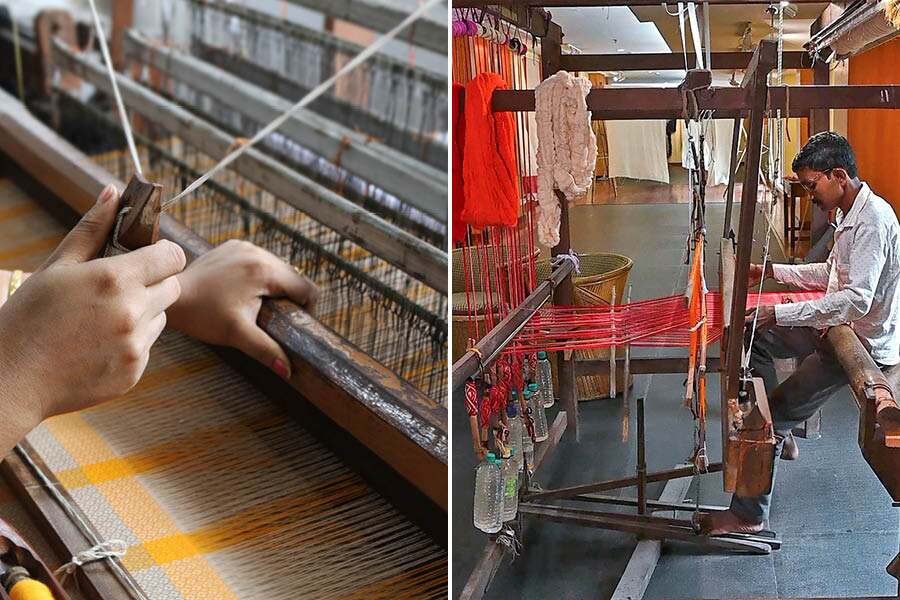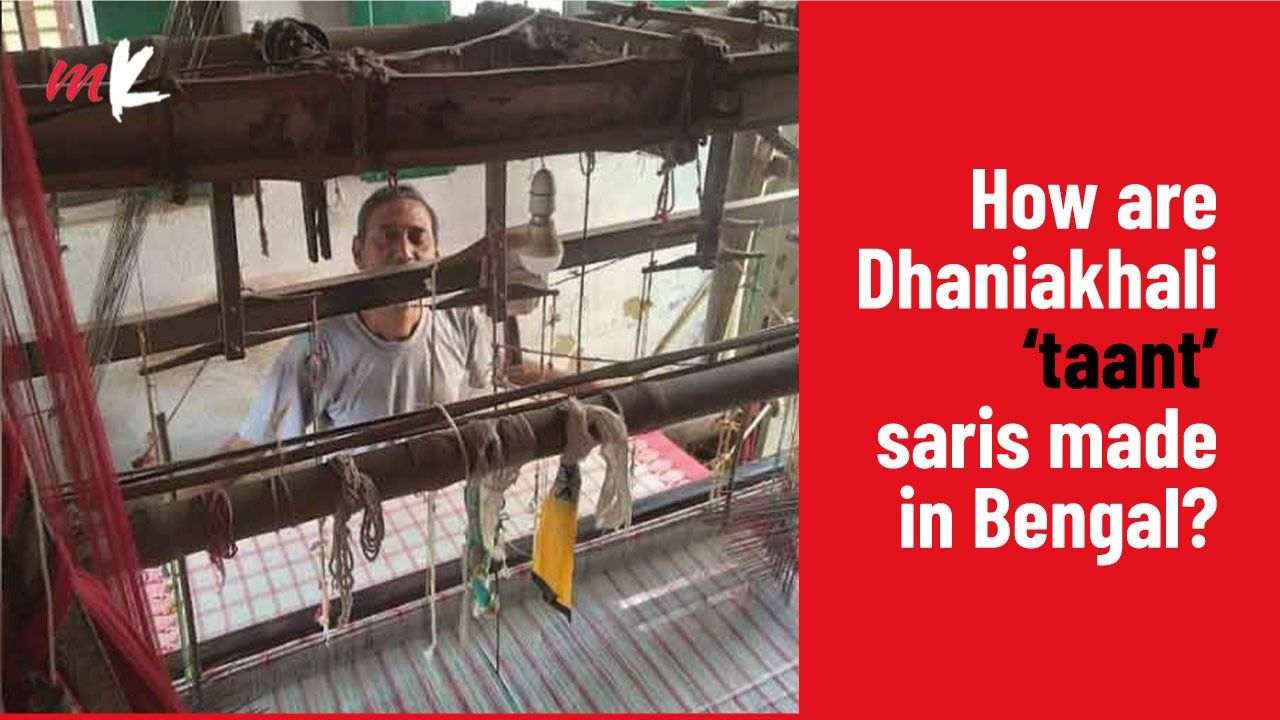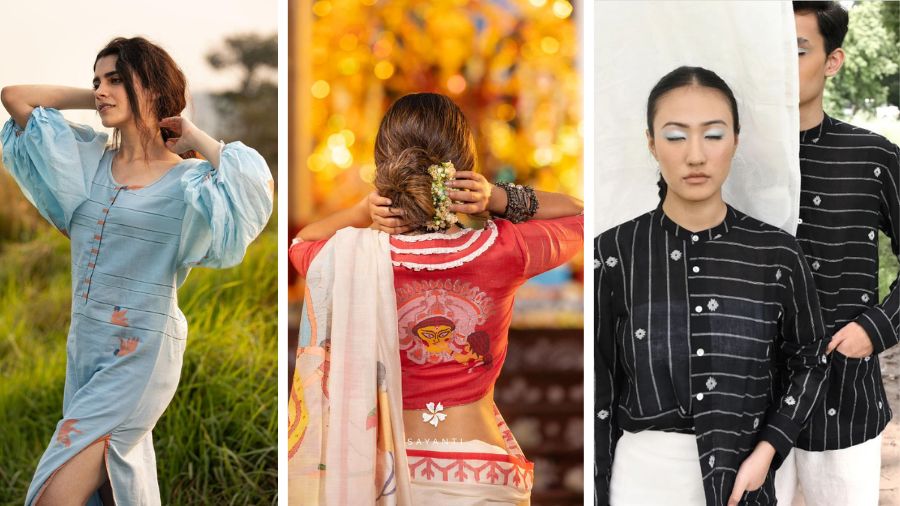This August, Kolkata witnessed a three-day event celebrating handloom, organised by Sutra Textile Studies. Held at ICCR, the event collaborated with several weavers and artisans from West Bengal, who showcased their craftsmanship. The fashion scene was set by well known designers like Bappaditya Biswas, Santanu Das, Suchismita Dasgupta and Supriyo Sahoo, among others. The event also honoured notable figures and hosted discussions to raise awareness about the craft.
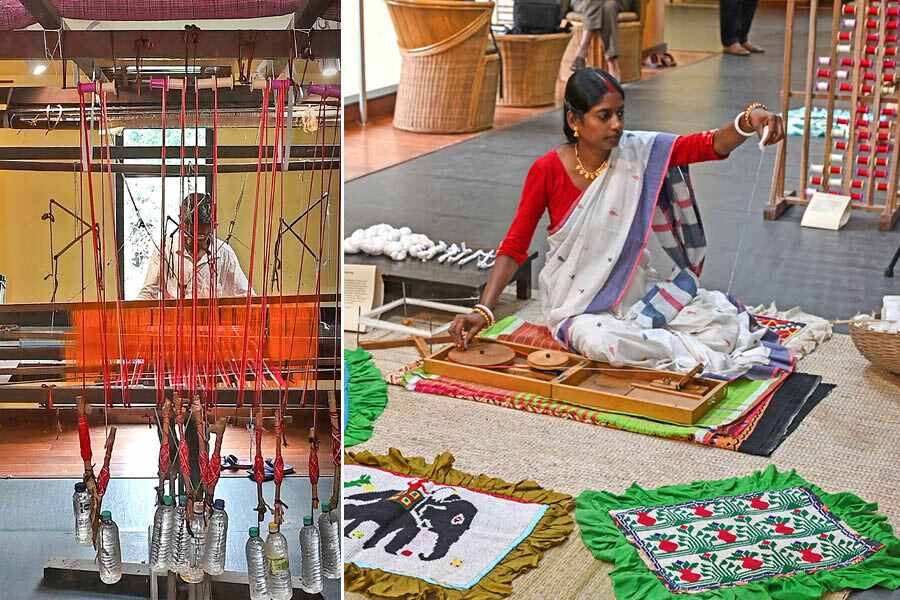
(L-R) A makeshift handloom; a charkha which reminds of Mahatma Gandhi Amit Datta
My Kolkata explored Sutra and the fading craft of the loom through the eyes of three generational handloom artisans. The freewheeling chat took place in a setting where one weaver crafted a gamchha on a makeshift handloom, while another worked on something new with a charkha. Fusion fashion, Bengali literature and a nearly century-old Garad sari all came together as the weavers gave an insight into their lives and discussed how they would like to carry forward their family legacies.
Sutra as the ‘sutradhar’
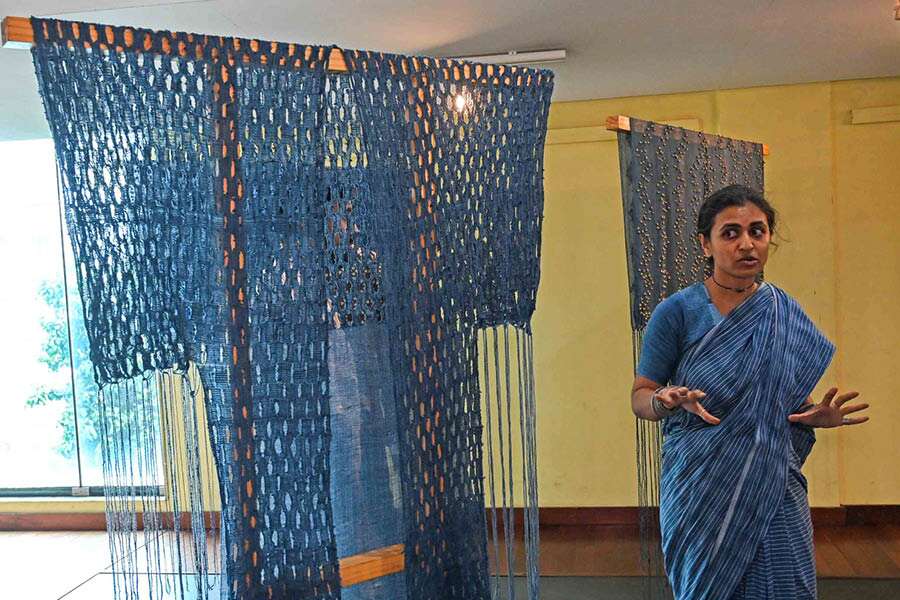
Shabri Wable at the event Amit Datta
Handloom, as a process, relies on finesse and skill — a craft that is an heirloom for many families across Bengal. Sutra, as the sutradhar (narrator), not only brought together numerous weavers under one roof, providing them a platform to showcase their work to a wider audience, but also gave them the opportunity to collaborate with prominent names in the fashion industry.
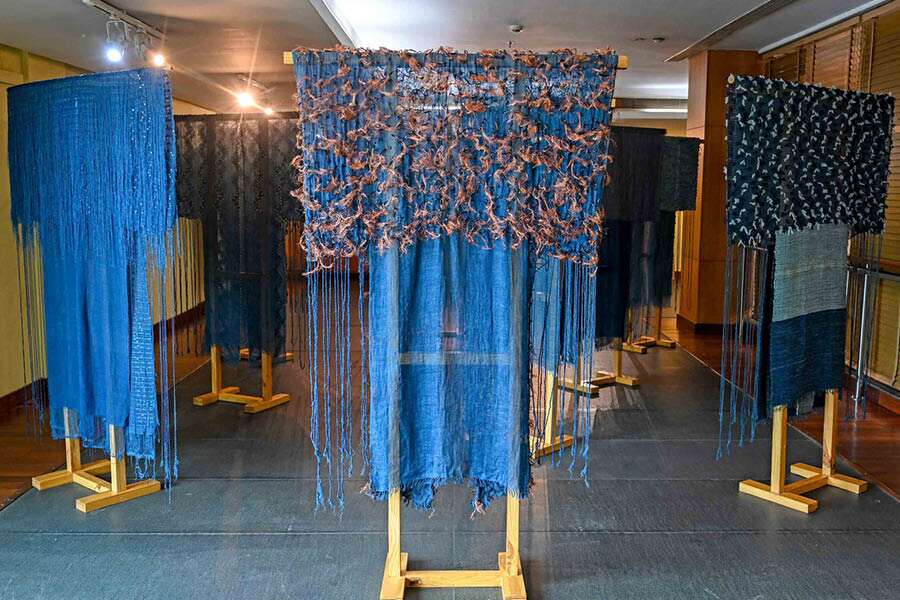
Bappaditya Biswas’s fusion creation Amit Datta
While retail was one part of the exhibition, the other section offered insight into the world of handloom by fashion designer Shabri Wable. From breaking down the mathematical precision needed to create the weaves to discussing the life cycle of handloom — a process with zero carbon footprint that champions sustainability — Wable also introduced My Kolkata to Bappaditya Biswas of Byloom fame, showcasing his fusion fashion work. This included using French bullion on zardosi or blending handlooms with electric wires to create unique pieces.
Weaves meet literature
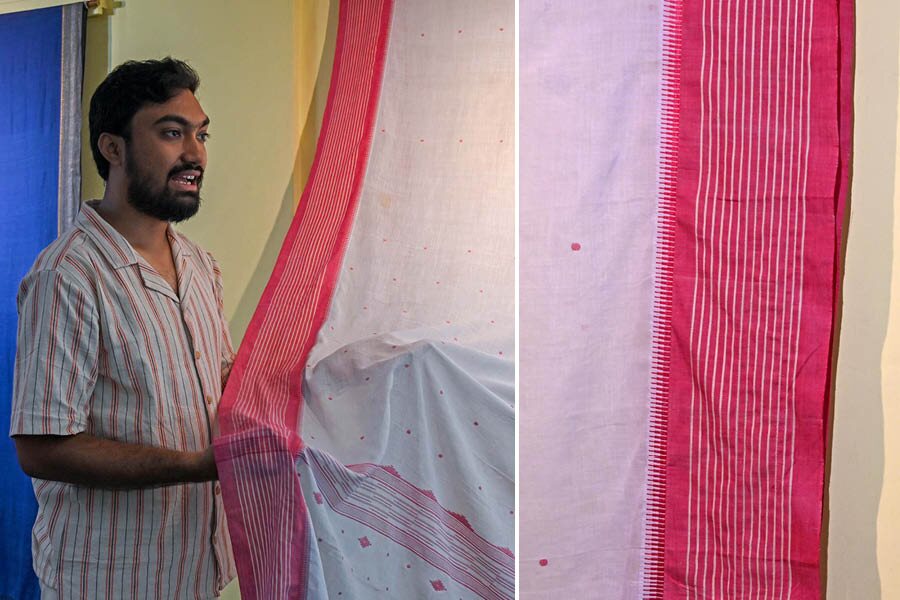
Vishal Saha explaining the various types of handloom saris from his curatorial collection Amit Datta
One of the most interesting facets of the exhibition was the work of textile curator Vishal Saha. His curatorial collection featured handloom saris dating from 30 to 100 years old, with a variety ranging from Tangail, Shantipuri, Jamdani Buti, Dhakai, Baluchari to Garad. From Aishperey, Benarasi Chaap Baluchari to Chatai Perey Garad — Saha’s meticulous curation, blending Bengali literature with traditional weaves, added a nostalgic touch to the exhibition.
Carrying forward the legacy
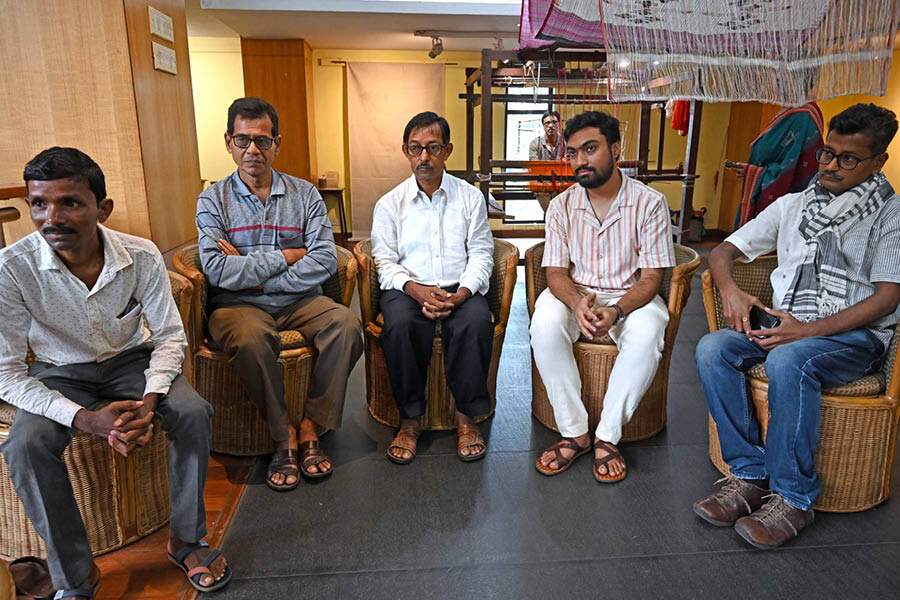
(L-R) Taraknath Das, Shaila Kumar Kundu, Taraknath Das, Vishal Saha and Supriyo Sahoo Amit Datta
Bengal has been a consistent contributor to the handloom sector. However, the age-old tradition of handloom weaving now faces stiff competition from machines and powerlooms. Weavers Taraknath Das and Shaila Kumar Kundu offered a glimpse into their world, discussing the challenges they face and the generational craft they continue to uphold. Meet the weavers here...
Taraknath Das — a dedicated gamchha weaver carrying forward his family legacy
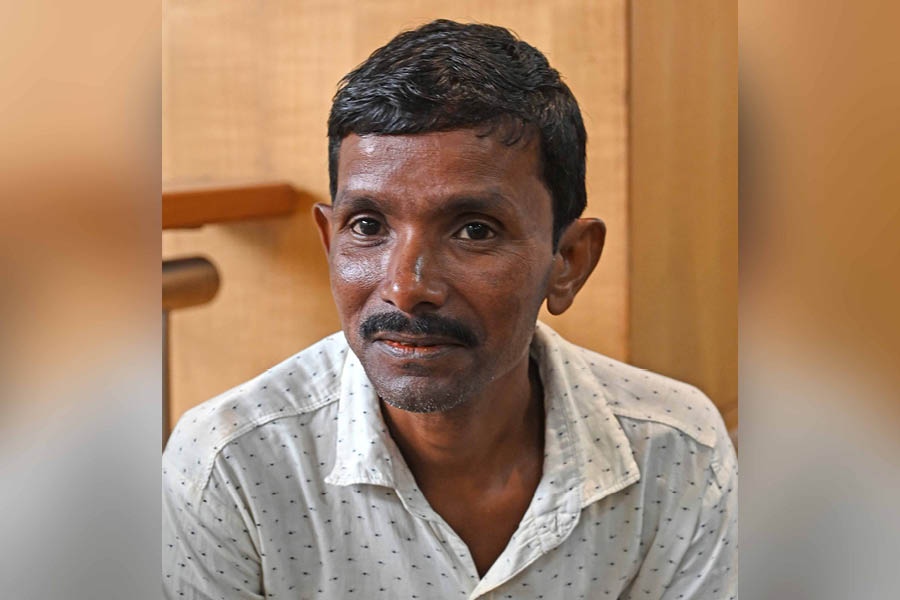
Starting when he was 12, Taraknath Das continues to carry forward his family legacy of handloom Amit Datta
Taraknath Das from Birbhum has been in the sector for 30 years — continuing his family’s legacy. He was introduced to handloom by his parents at the age of 12. With limited access to education, he joined the family trade early in life to help make ends meet. His family comprises his parents, wife, son and two daughters — all of whom are active participants in their family’s handloom business.
Das introduced his son to handloom when he turned 18, while his daughters, who are in Class IX and Class X, also assist the family with the craft alongside their studies. Though Das primarily specialises in making gamchhas, he also produces customised bedsheets and dress materials. His day begins at 5am, spending around six to seven hours daily on the loom. The family shares a single heirloom handloom, producing about eight gamchhas per day. His son works on someone else’s loom, but whether at their home or in another unit, the Das family remains dedicated to their traditional vocation.
Das had participated in the Sutra organised handloom exhibition in Kolkata. The turn-up of handloom enthusiasts brought joy to the generational weaver as he observed how the urban clientele were more keen on quality over quantity. However, generational weavers like Das are grappling with competition from powerlooms and the next generation’s waning interest in the family profession.
Shaila Kumar Kundu — a Begumpuri weaver, rues the lack of interest in the next generation
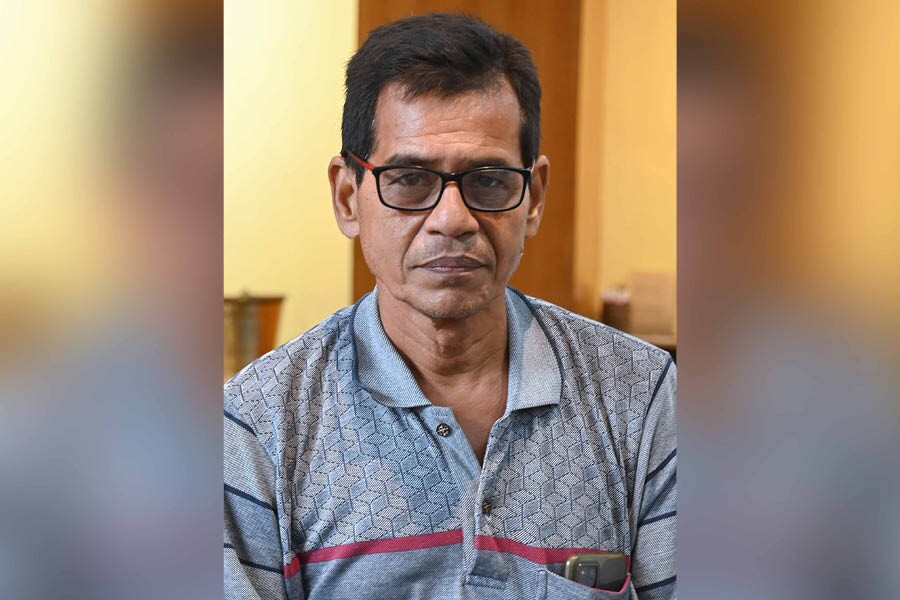
Shaila Kumar Kundu is a witness to the rise and fall of his family’s handloom unit Amit Datta
A resident of Begumpur in Hooghly, Shaila Kumar Kundu works as a manager in a handloom cluster. Kundu’s rendezvous with tant shilpa happened at an early age through the handloom units at his own place. Growing up among weavers, he has witnessed both the rise and fall of the industry.
Kundu’s hands-on experience with handloom happened right after he cleared Madhyamik (Class X) exams. He inherited the craft from his great grandfather. Growing up among the weavers and working closely with them has given Kundu a firm understanding of the sector, and he believes the craft is incomplete without the help of the weavers as well as the ancillary workers. He emphasises the vital role of the female workforce in this sector.
In the Begumpur handloom cluster, there are 80 weavers and approximately 150 ancillary workers. The weavers in Kundu’s cluster typically work eight to nine hours a day, and depending on the sari’s design, it can take up to three days or more to complete one. Kundu mainly works with the Begumpuri sari — a design native to the region.
While his own brothers are also trying to carry the family legacy forward, the next generation is not as inclined to follow the same path.
Taraknath Das roots for handloom over powerloom

Taraknath Das strongly believes in the power of handloom Amit Datta
Taraknath Das is from Burdwan. He firmly believes that the environmental friendliness and sustainability of the handloom sector will keep it afloat. As a believer in man's ability to sustain, he thinks a weaver will try to keep his loom active for as long as possible. Since handloom is dependent on skill rather than electricity or machines, this is a significant advantage the sector has over powerloom.
